Consider three flasks in diagram below. Assuming that connecting tube has negligible volume and all three falsks are at same temperature.
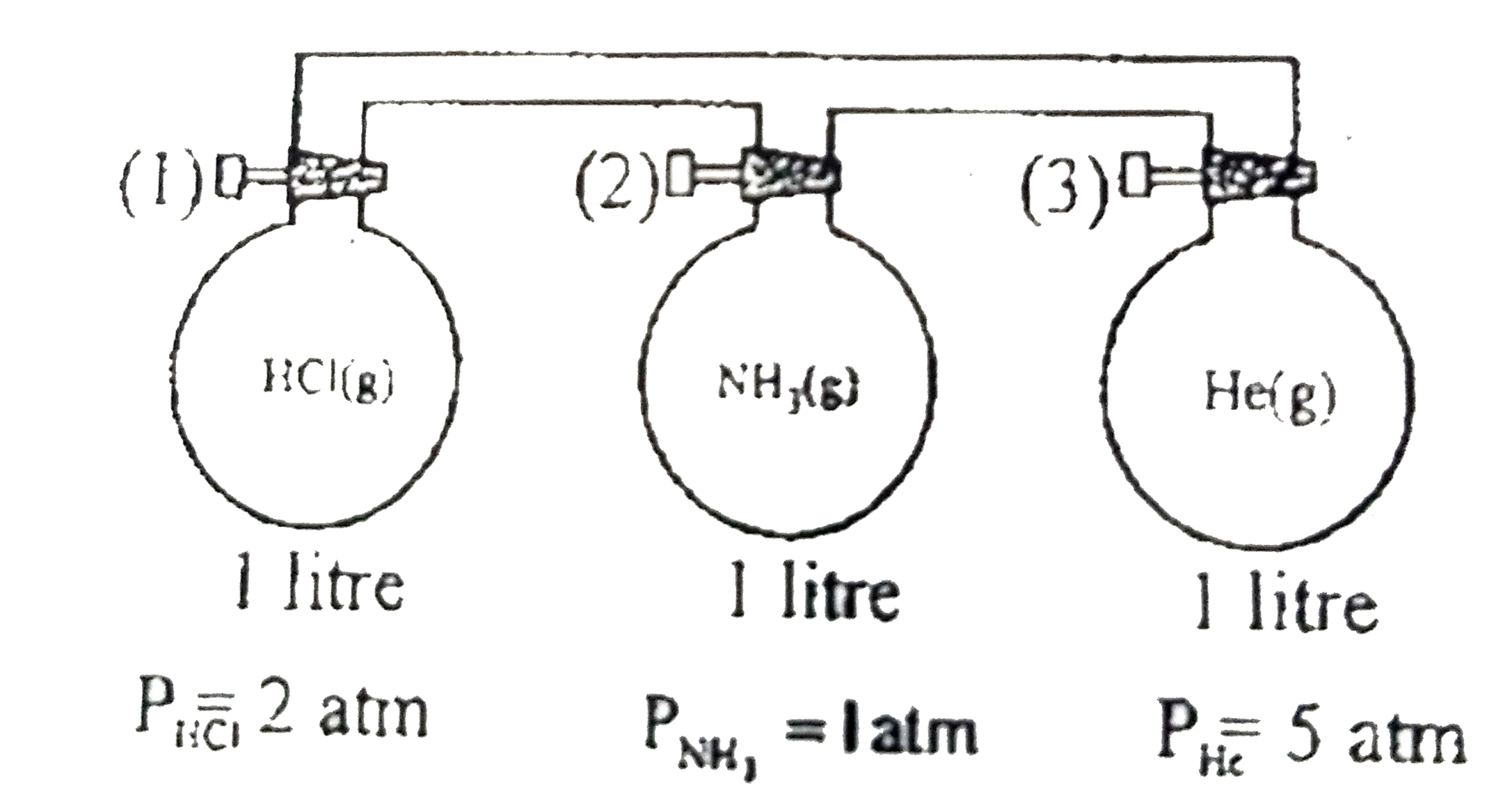
If only 1 and 2 stopcocks are opened then select correct option(s).
PHCl=12 atm
PNH3=0 atm
PNH3+PHCl=12 atm
PHe=5 atm
nHCl=PVRT=2×1RT
nNH3=PVRT=1×1RT
NH3+HCl→NH4Cl(s)
moles 1RT2RT
01RT
nHCl remain after reaction =1RT
For HCl(g):−Pnew(V+V)=nRT
Pnew×2=1RT×RT
(PHCl)final=Pnew=12atm=Ptotal
PNH3=0(LR)
Topper's Solved these Questions
- TEST PAPERSBOOK - BANSALCHAPTER - TEST PAPERSEXERCISE - CHEMISTRY PART (A)
14 Videos
- TEST PAPERSBOOK - BANSALCHAPTER - TEST PAPERSEXERCISE - CHEMISTRY PART (B)
1 Video
- TEST PAPERSBOOK - BANSALCHAPTER - TEST PAPERSEXERCISE - Chemistry PART D
4 Videos
- SOLUTIONSBOOK - BANSALCHAPTER - SOLUTIONSEXERCISE - Exercise4
32 Videos
- THERMOCHEMISTRYBOOK - BANSALCHAPTER - THERMOCHEMISTRYEXERCISE - Exercise 4
15 Videos
Similar Questions
A liquid rises to same heigt in three capillaries at same temperature. Select the correct option(s)
View SolutionThe figure given below shows three glass chambers that are connected by valves of negligible volume. At the outset of an experiment, the valves are closed and the chambers contain the gases as detailed in the diagram. All the chambers are at the temperature of 300K and external pressure of 1.0atm.
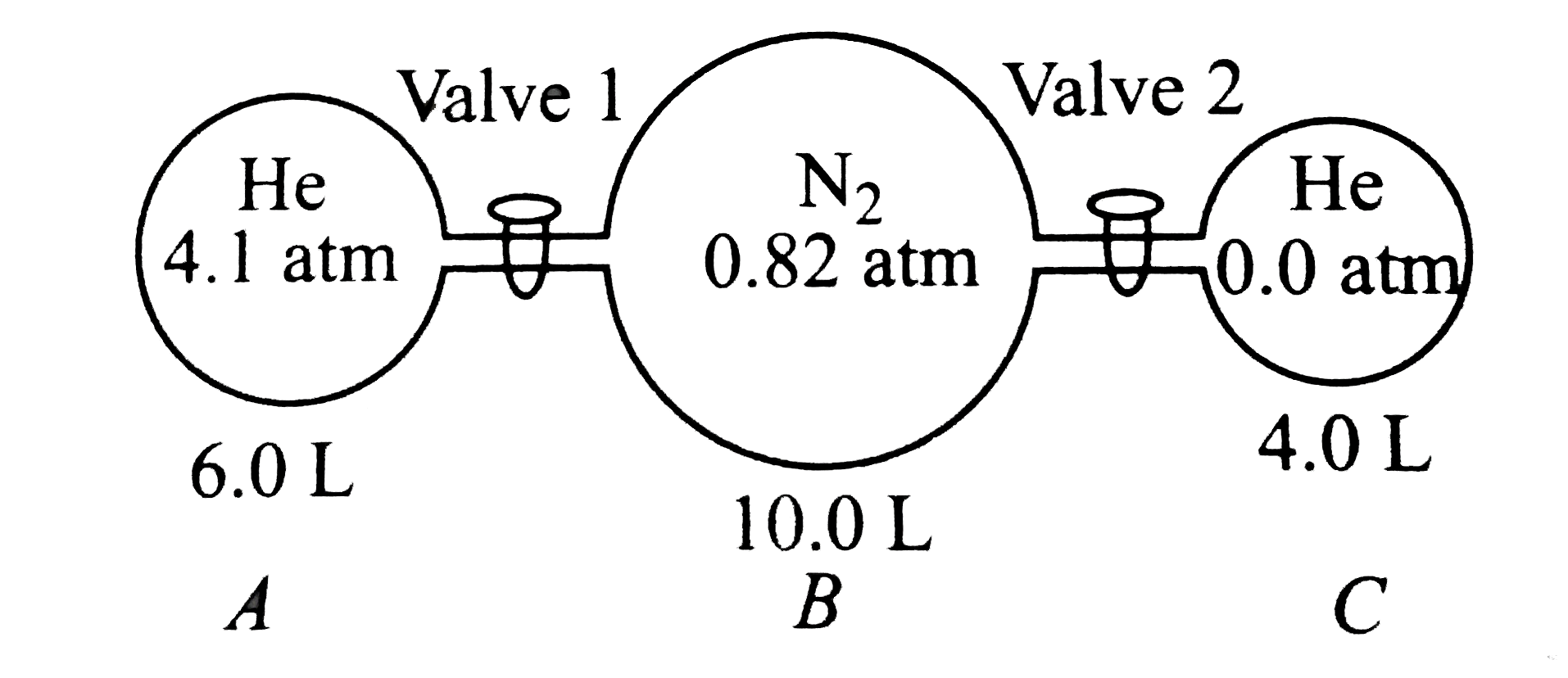
What is the total pressure in chamber B after valve 1 is opened?
View Solution
Knowledge Check
Consider three flasks in diagram below. Assuming that connecting tube has negligible volume and all three falsks are at same temperature.
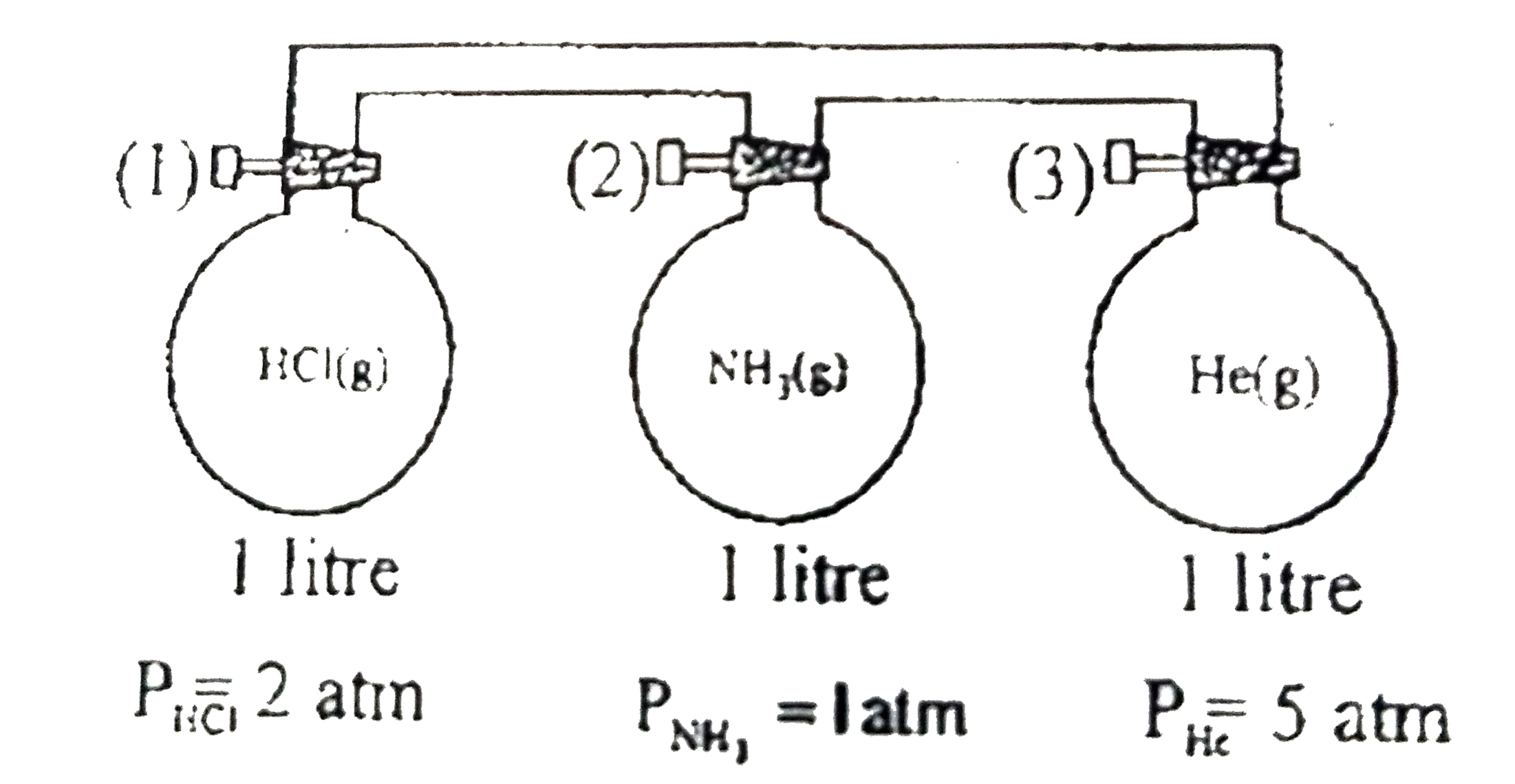
If all three stopcocks are opened then select correct option(s):APHCl=23atmBPNH3=13 atmCP'→tal=2 atmDPHe=53 atmA liquid rises to same heigt in three capillaries at same temperature. Select the correct option(s)
AThe weight of liquid in capillaries may not be equalBThe radius of meniscus are equalCThe capillaries must be cylindricalDThe hydrostatic pressure at the base of capillaries is equalTwo closed bulb of euqal volume (V) containing an ideal gas initially at pressure pi and Temperature T1 are connected through a narrow tube of negligible volume as shown in the figure below. The temperature of one of the bulbs is then released to T2. The final pressure pt is :
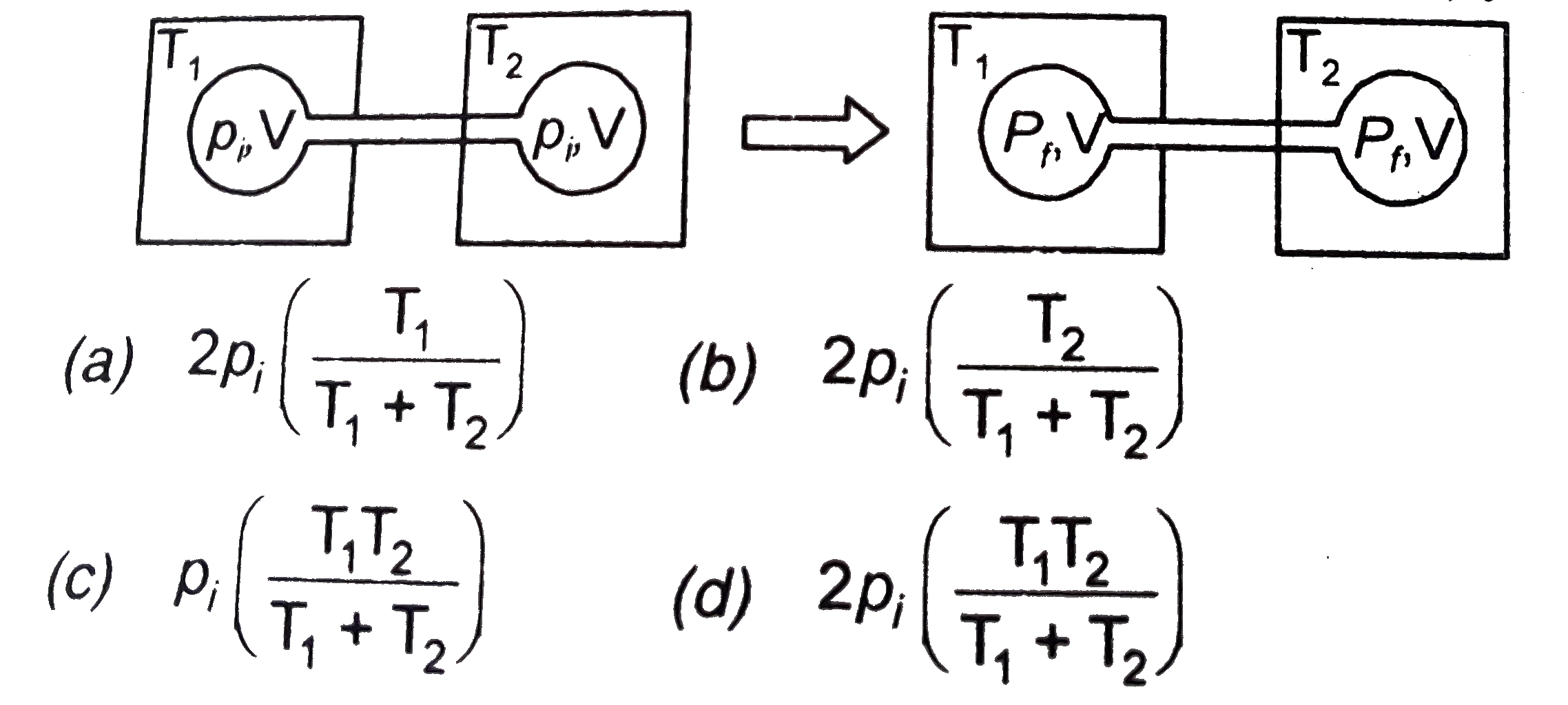 A2pi(T1T1+T2)B2pi(T2T1+T2)Cpi(T1T2T1+T2)D2pi(T1T2T1+T2)
A2pi(T1T1+T2)B2pi(T2T1+T2)Cpi(T1T2T1+T2)D2pi(T1T2T1+T2)
The figure given below shows three glass chambers that are connected by valves of negligible volume. At the outset of an experiment, the valves are closed and the chambers contain the gases as detailed in the diagram. All the chambers are at the temperature of 300K and external pressure of 1.0atm.

What is the total pressure in chamber B after valve 1 is opened?
View SolutionThe figure given below shows three glass chambers that are connected by valves of negligible volume. At the outset of an experiment, the valves are closed and the chambers contain the gases as detailed in the diagram. All the chambers are at the temperature of 300K and external pressure of 1.0atm.
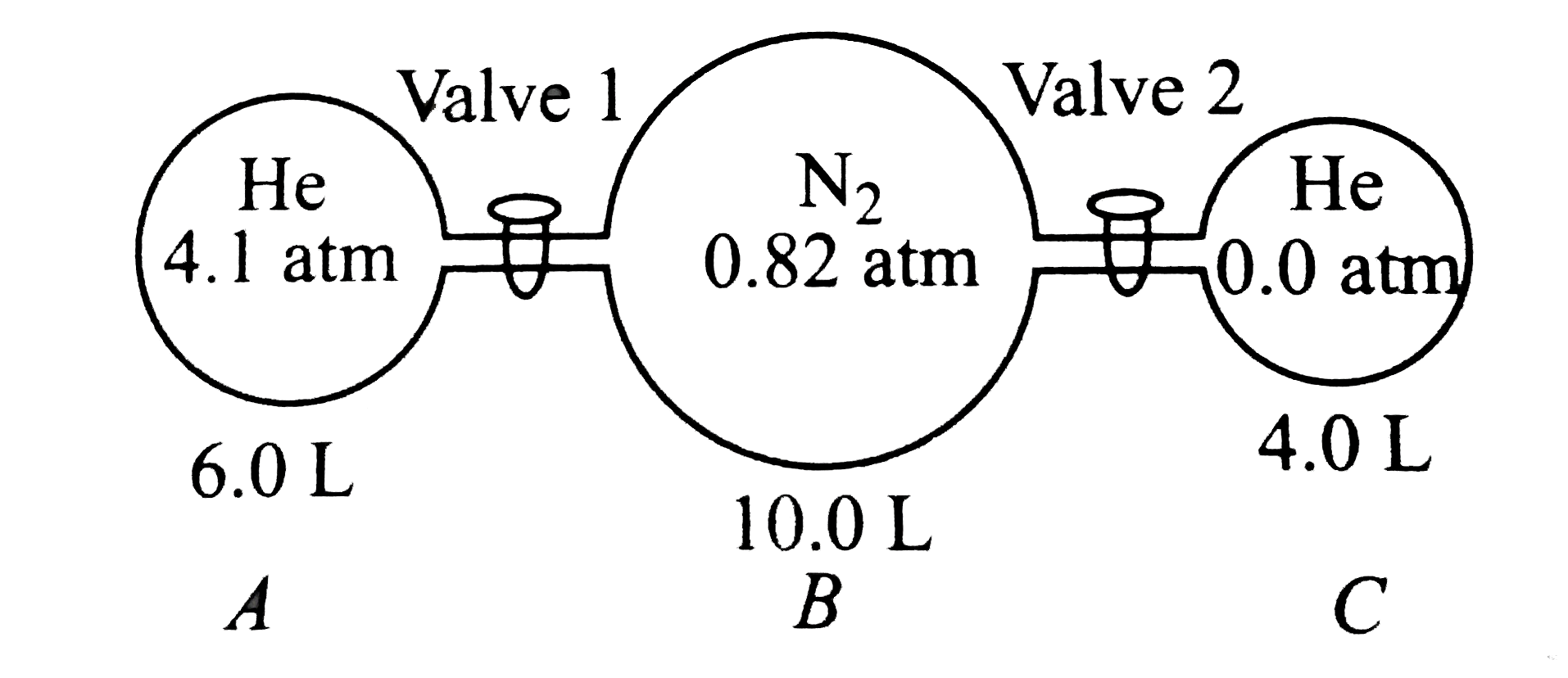
Which of the following represents the total kinetic energy of all the gas molecules after both valves are opened?
(R=0.082atmLK−1mol−1=8.314JK_1mol−1)
View SolutionThe figure given below shows three glass chambers that are connected by valves of negligible volume. At the outset of an experiment, the valves are closed and the chambers contain the gases as detailed in the diagram. All the chambers are at the temperature of 300K and external pressure of 1.0atm.

Which of the following represents the total kinetic energy of all the gas molecules after both valves are opened?
(R=0.082atmLK−1mol−1=8.314JK_1mol−1)
View SolutionConsider the arrangement of bulbs shown in the drawing. Each of three bulbs contains a gas at pressure shown. What is pressure of system when all stopcocks are opened. Assuming that temperature remain constant. (Neglect the volume of capollary tubing connecting bulbs)
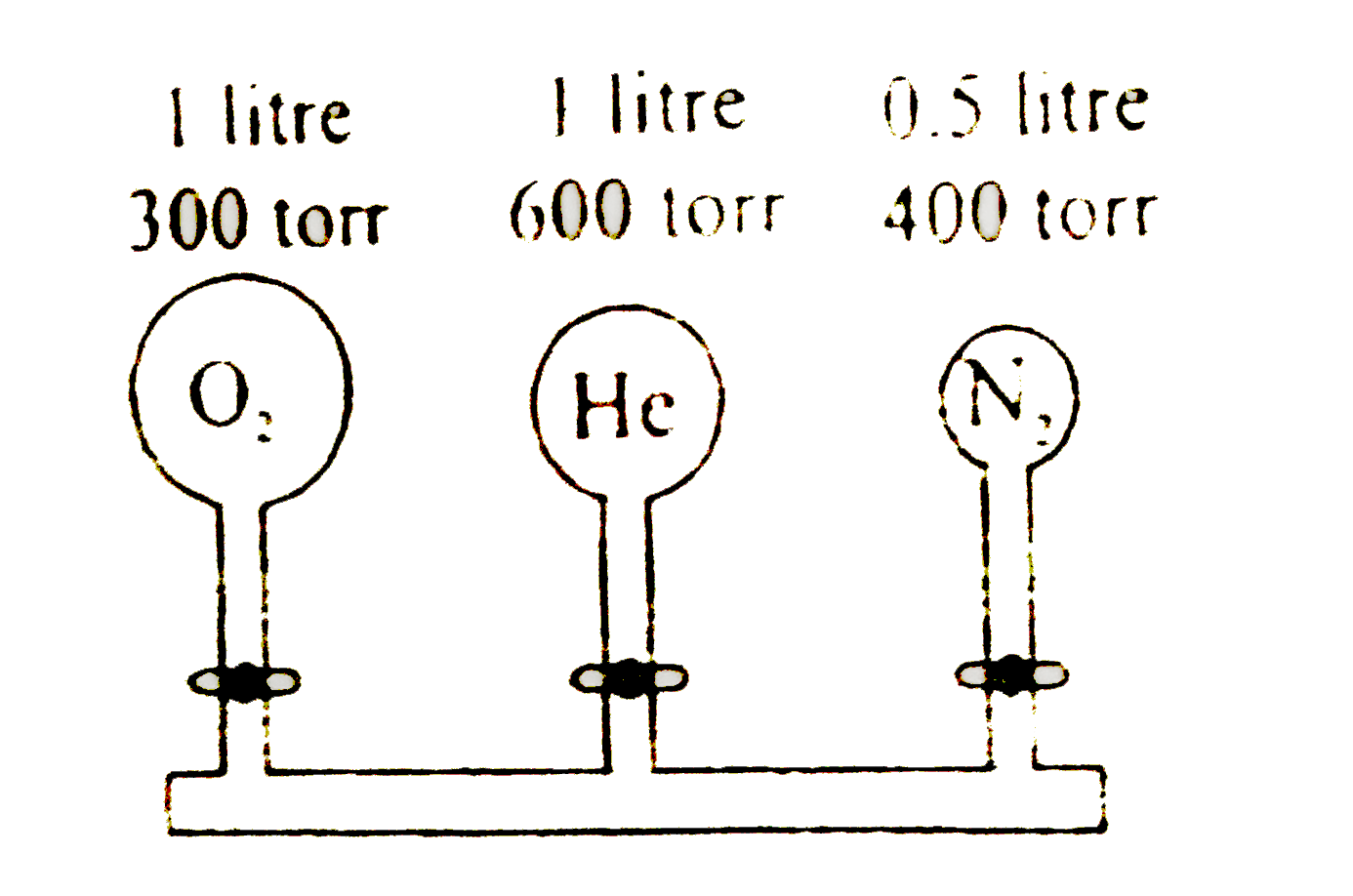
View SolutionTwo containers are connected by a tube of negligible volume container (I) has N2(g) gas at a pressure 4 atm and temperature T (K) and container (II) has 1 litre H2O(l) at temp (T) initially. Find correct option(s) after stopcock is removed. (Aq. tension=190torr)

View Solution
